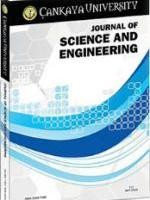Exploring Perceptions and Practices about Information and Communication Technologies in Business English Teaching in Pakistan
Exploring Perceptions and Practices about Information and Communication Technologies in Business English Teaching in Pakistan
___
- Black, P. et. al. (1996). Changing the Subject: Innovations in science, mathematics and Technology Education. London:Routledge/OECD.
- Browne, C. & Gerrity, S. (2004). Setting up and maintaining a CALL laboratory. New perspectives on CALL for second language classrooms (pp. 171-198). Mahwah, New Jersey: Lawrence Erlbaum Associates, Publishers.
- Brown, H.D. (2000). Teaching by principles: An interactive approach to lang pedagogy. New York: Longman.
- Chen, H.J. (2003). Internet-assisted language learning and professional development. Seminar on multimedia English teaching, Chungtai institute of health sciences and technology, pp. 16-33.
- Chen, Yu-Li. (2008). Factors affecting the integration of information and communication technology in Language teaching. Asian EFL Journal. Professional teaching articles.
- Clark, K. (2000). Power Web searching techniques for teacher educators. ERIC document reproduction service no. ED 444497, retrieved from www.eric.com.
- Davies, G. (2003). Perspectives on offline and online training initiatives. Language learning online: Towards best practice (pp. 193-214). Lisse, The Netherlands: Swets & Zeitlinger.
- Donna, S. (2000). Teach business English. Cambridge: Cambridge UP.
- Epper, R.M. (2001). The new economy meets the Ivory tower. Teaching faculty how to use technology: Best practices from leading institutions (pp. 1-18). Westport, CT: The American council on education, ORYX press.
- Ertmer, P.A. (1999). Addressing first and second order barriers to change: Strategies for technology integration. Educational Technology Research & Development, 47(4), 47-61.
- Finely, L & Hartman, D. (2004). Institutional change and resistance: Teacher preparatory faculty and technology integration. Journal of Technology and Teacher Education, 12(3), 319-337.
- Fotos, S. & Browne, C. (2004). The development of CALL and current options. In S. Fotos and C.M.Browne (Eds), New perspectives on CALL for second language classrooms (pp. 3-14). Mahwah, New Jersey: Lawrence Erlbaum Associates, Publishers.
- Hassan, S. (2005). Reading and Writing skills for advanced students of business English in Pakistan. NUML, Islamabad. Unpublished PhD Thesis.
- Higher Education Commission (2006) Annual Report 2005-06, Islamabad.
- Maeers, M. & Cooper, D. (2002). A faculty of education as a community of learners: Growing to meet the demands of instruction and technology. Retrieved from www.eric.com.
- Merriam, S.B. (2002). Assessing and evaluating qualitative research: Examples for discussion and analysis. Qualitative Research in Practice (pp. 18-33). San Francisco, CA: Jossey-Bass, A Wiley Company.
- Okamoto, T. (2004). How a web based course facilitates acquisition of English for academic purposes. Language Learning & Technology, 8(2), 33-49. Retrieved from www.msu.edu.com.
- Safdar, M. (2008). Facilitating and Empowering teachers through information and communication technologies. Conference Proceedings. Islamabad: Szbist.
- Shrivastava, P. (1998). Learning Community. Retrieved from www.Environmentalintel.com/Soc.
- Solobodina, T. (2000). Faculty development in technology for teachers of English for specific purposes. Retrieved from www.eric.com on October, 2006.
- Susser, B. & Robb. T. N. (2004). Evaluation of ESL/EFL instructional websites.
- In S. Fotos & C. M. Browne (Eds.), New perspectives on CALL for second language classrooms (pp.279- 296). Mahwah, New Jersey: Lawrence Erlbaum Associates, Inc.
- Terwindt, S. (2000). Constructivistic learning. Faculty development (pp. 448-450). Retrieved from www. eric.com.
- Van Sachie, J. (1997). A World Wide Web survey on the use of information and communication technology in Education. European Journal of Teacher
- Education, 20:1, 85-92. Retrieved from www.informaworld.com on 25 June, 2009.
- Warschauer, M. (2000). The changing global economy and the future of English teaching. TESOL Quarterly, 34(3), 511-533.
- Whitehead, D. & Whitehead, G. (1993). English for Business. Oxford: M. Simple Books.
- Yayın Aralığı: Yılda 2 Sayı
- Başlangıç: 2009
- Yayıncı: Çankaya Üniversitesi
Bartoloméo de las Casas Yerlilerin Gözyaşları, Yerlilerin Yok Edilişinin Kısa Tarihi
Mythic Visions of the Borderland: Rodolfo Anaya’s Bless Me, Ultima
V502 Ophiuchi Çift Yıldız Sisteminin Işık Eğrisi ve Dönem Analizi
Selim O. SELAM, Özgür BAŞTÜRK, Aslı ESMASLI, Hakan V. ŞENAVCI, Berahitdin ALBAYRAK
Hussain Muhammad ATHAR, Muhammad Zafar IQBAL
İbrahim E. İNAN, Yavuz UĞURLU, Bülent KILIÇ
Determination of Dependence Structure by Using Graphical Tools for Bivariate Continuous Data
Özlem Ege ORUÇ, Zeynep F. Eren DOĞU
Failed State Concept and the Sub-Saharan African Experience
Natural Background Radiation Measurements of a Base Station in Yalvaç County
